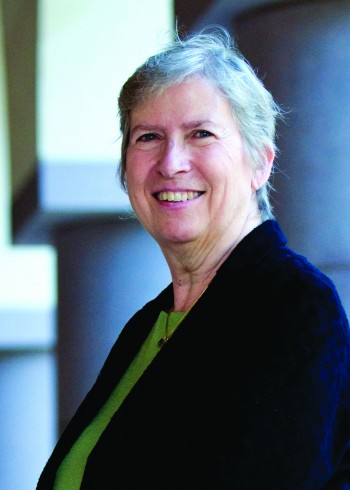Welcome
October 21, 2014
 Dear Alumni and Friends,
Dear Alumni and Friends,
As you browse this year’s alumni Newsletter, I think you will agree that it has been another tremendous year of scientific discovery at the Jackson School of Geosciences.
Our mission at the Jackson School is to advance understanding of the earth and its resources, systems and environment, for the lasting benefit of humankind. The work featured in this magazine is doing just that.
The research you will read about shows a tremendous range of science, plus the integration of research and education. Among the highlights are the ongoing work that Don Blankenship and colleagues are doing on the West Antarctic Ice Sheet, and closer to home, Bayani Cardenas’s research on the Mississippi River’s limitations to filter out nitrates flowing to the Gulf of Mexico. Also highlighted is Mark Helper’s preparation of the next generation of astronauts to conduct field geology in space, continuing Bill Muehlberger’s legacy.
And proving that big ideas can come in deceivingly small packages is the cutting-edge research on nanoparticles being conducted by BEG’s Advanced Energy Consortium, and Danny Stockli’s research teasing out a wealth of geological knowledge from a single zircon.
As exciting as these projects are, they represent only a small fraction of the science being pursued at the Jackson School. To really get a feel for the breadth and depth of JSG research and student involvement, I invite you to attend one of my favorite events of the year, the student-led research symposium. I encourage you to look at the photos of the 2014 symposium at which graduate and undergraduate students displayed their research. This academic year’s symposium is Feb. 7, 2015, in the Texas Union Ballroom. Please attend. You won’t regret it.
As many of you are well aware, the field of geosciences is expanding and changing rapidly. The evolving landscape offers exciting opportunities and challenges. Among the most important issues we face is how to arm young geoscientists with the skills needed to thrive in the new environment and economy.
In January 2014, we hosted a National Science Foundation sponsored Summit on the Future of Undergraduate Geoscience Education to foster a dialogue on this crucial issue. The three-day summit brought together about 200 educators from R1 research universities with undergraduate programs, four-year private and state colleges and two-year community colleges. This vital work will be ongoing, but the summit was a great start.
I hope you take pride in the Jackson School as you read this year’s Newsletter. You should, because none of this would be possible without the support of an active and caring network of alumni and friends. Thank you so much for helping make the Jackson School the great place it is.
Sharon Mosher, Dean
Back to the Newsletter